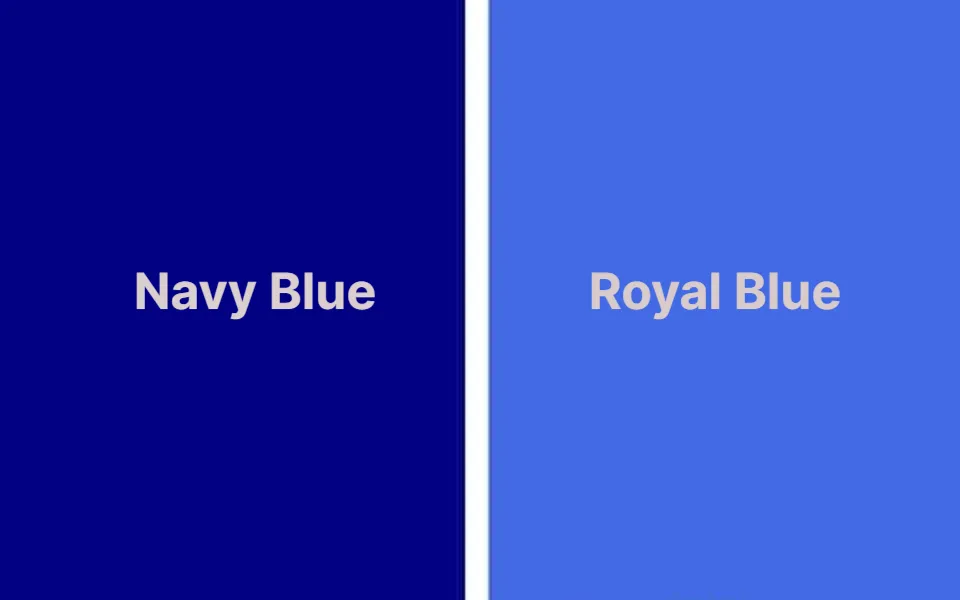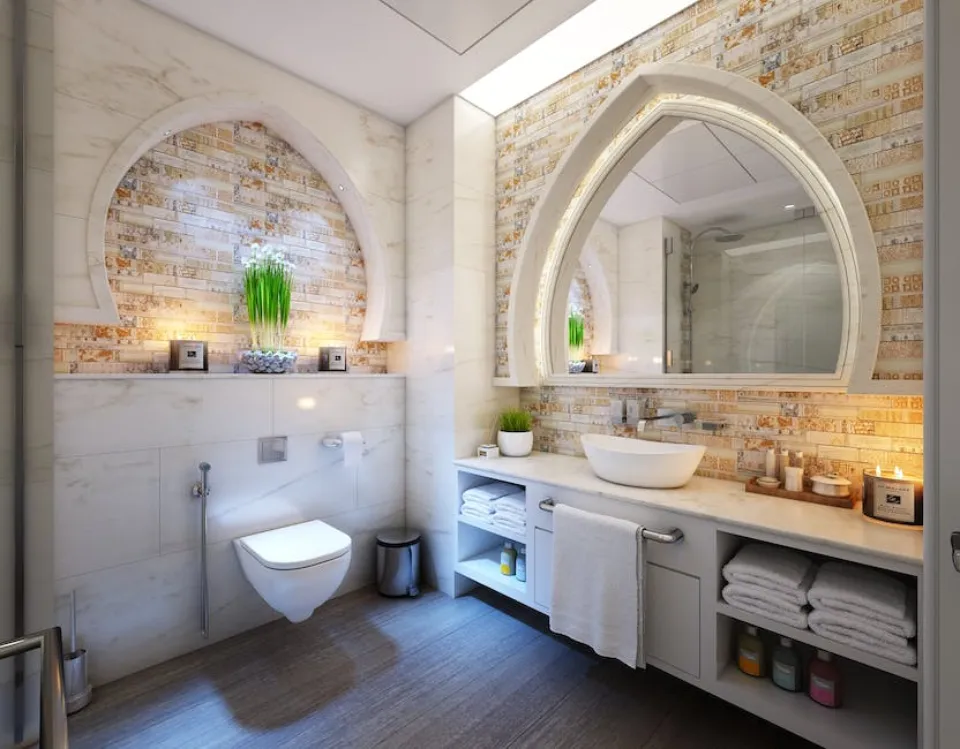Without specialized cut-in brushes, the majority of painting tasks cannot be finished. Each time you need to paint a wall, door, ceiling, etc., you will need one for painting the corners and edges. The best paint brushes for cutting in are crafted from sturdy materials and have nice bristles that do not fray even after frequent use.
The best cut-in paint brushes include Purdy ClearCut Angled Paint Brush, Wooster Shortcut, Stinger Brush…
I’ll show you the post’s more in-depth details.
Best Cut In Paint Brushes
Purdy ClearCut Angled Paint Brush
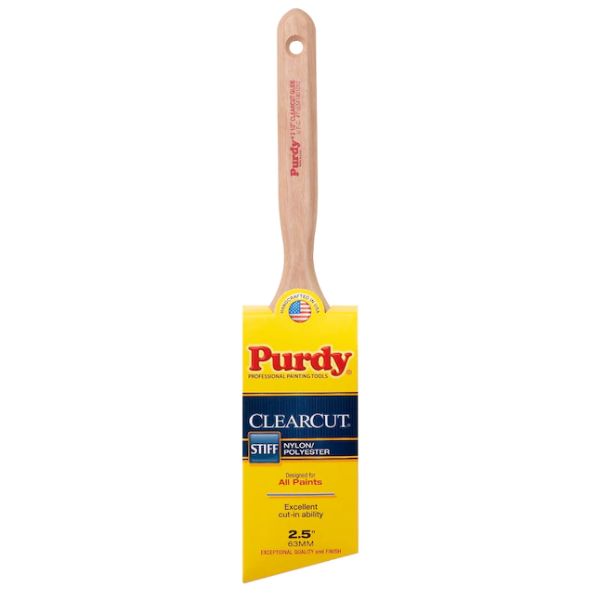
I only use the Purdy ClearCut in the 3-inch size because it is my favorite for cutting in corners on walls and ceilings. Both the angled and flat bristle versions produce extremely sharp lines, but I like the angled one better for applying paint to tight spaces.
Swan or Sprig styles of the ClearCut are both available. The Swan’s ferrule is thicker and can accommodate more paint. Being thin, the Sprig can hold less paint. The walls and ceilings are where I use the Swan the most. Although the brush cover specifies that it can be used with all paints and stains, I find that latex and acrylic paints produce the best results. For oil-based paint, I use a different brush.
Brush marks are reduced by the ClearCut’s relatively soft nylon/polyester bristles. I prefer a little stiffness in the bristles’ flex when cutting in. Too flexible and bouncy brushes make a mess and are more difficult to handle. If you’re not careful, this brush quickly loses its shape. The bristles will bend if the brush is ever vertically positioned in a paint can, permanently altering its shape. I clean the brush before rolling a wall or wrap it in plastic.
There is also a newer version of this brush called Elite, but I haven’t worked with one yet, so I can’t comment on the performance.
Wooster Shortcut
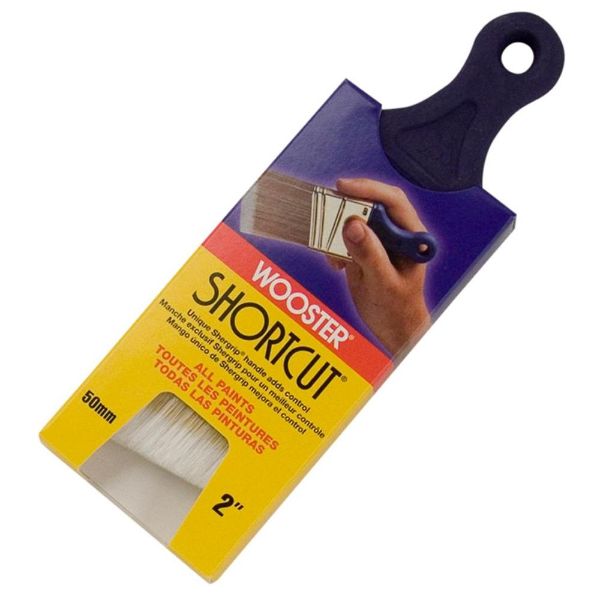
Look at Wooster Shortcut if you need an affordable brush of decent quality. It is also one of the best cut in paint brushes. This brush is specifically designed for use in corners and restricted areas. It offers a smooth finish and works with all water-based stains and paints. A 2-inch-long, flexible purple Shergrip handle gives the brush enough mobility. To ensure durability, the maker combined white nylon and gold-plated polyester to create the angled bristle.
This product has a narrower 2-inch sash than a Purdy Clearcut brush that is 3-inches long. The handle, which is soft rubberized for Wooster Shortcut and wooden for Purdy, is the primary distinction, though.
As a result, while this brush is a good value for the money and will handle cutting in with ease, it is not intended for continuous use. After a few uses, the bristle lost its ability to keep its shape.
Stinger Brush
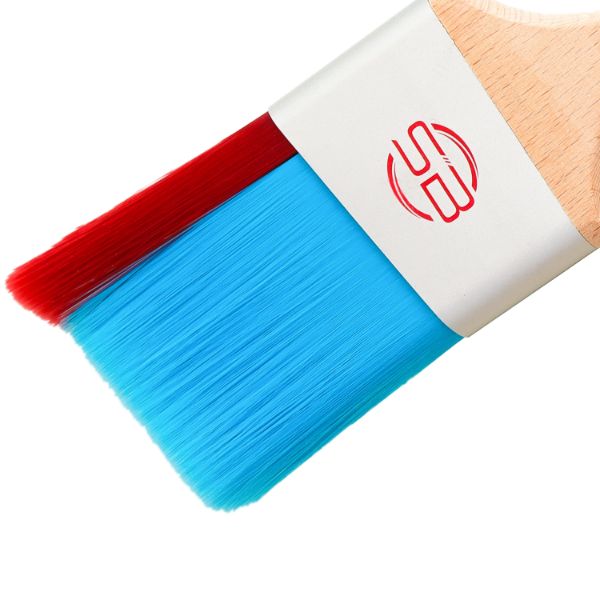
Check out Wooster Shortcut if you’re looking for a reasonably priced brush of decent quality. It is also one of the best cut in paint brushes. This brush is specifically designed for use in corners and small spaces. It offers a smooth finish and works with all paints and water-based stains. The flexible purple Shergrip handle, which is only 2 inches long and short, allows the brush to move around easily. The angled bristle’s maker used a combination of white nylon and gold-plated polyester to give it durability.
This product has a narrower 2-inch sash compared to a 3-inch Purdy Clearcut brush. However, Wooster Shortcut’s handle, which is soft rubberized rather than wooden for Purdy, is the main point of distinction.
To sum up, this brush is a nice value for the money and handles cutting in with ease, but it is not intended for continuous use. After a couple of uses, the bristle lost its ability to keep its shape.
Richard Elegance
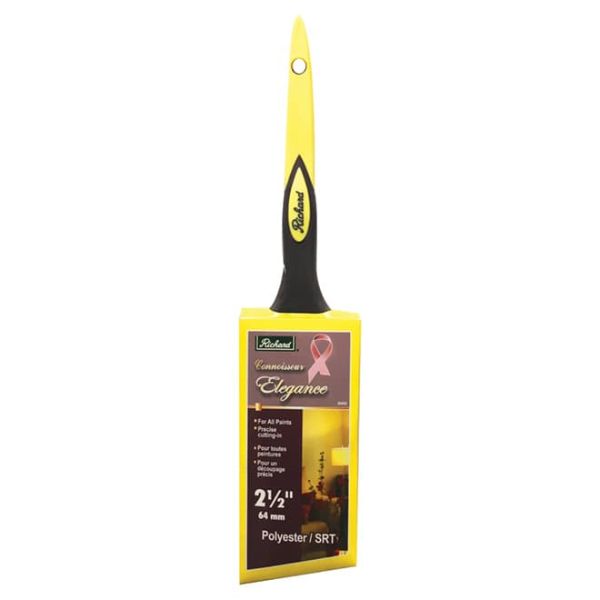
Richard Elegance is the best option if you require a brush for cutting in latex paint. For easy paint application, this trim brush has a soft grip handle and a ¾-inch polyester bristle. Due to the tapered shape of the brush, this product is ideal for small interior tasks because it offers precise cutting.
This item is more suited to a limited range of applications due to its size and shape when compared to a 3-inch Purdy Clearcut brush that is angular. It is not intended for use with oil-based paints or exterior projects, unlike the analog.
The brush is generally comfortable to hold and allows for beautiful paint application along corners and trims. Additionally, it is practical that even after repeated use, the brush bristles keep their shape and do not shed. However, when you attempt to cover a large area, paint streaks appear.
Purdy Xl Glide
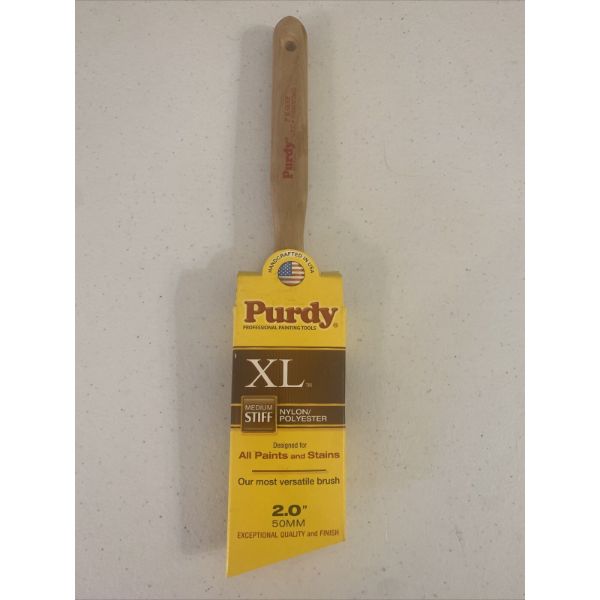
Look into Purdy XL Glide if you require a brush that can be used both inside and outside. It is a 3-inch paintbrush with an angled sash that can be used with latex and oil-based paints of all types. It is also one of the best cut in paint brushes. A smooth paint application is made possible by the brush’s nylon-polyester bristles and cozy wooden handle.
Purdy XL Glide is more versatile and suitable for larger painting projects when compared to Richard Elegance trim brush, which has bristles with a smaller ¾-inch diameter. Additionally, Richard Elegance primarily uses latex paint, whereas the analog can also be used with primers and stains.
Purdy XL Glide is an innovative paint brush for edges that evenly applies paint and produces a finish that resembles glass. My only issue is that the brush head wobbles due to the tiny brads used to join the handle to the metal ferrule.
Purdy Xl Angled Brush
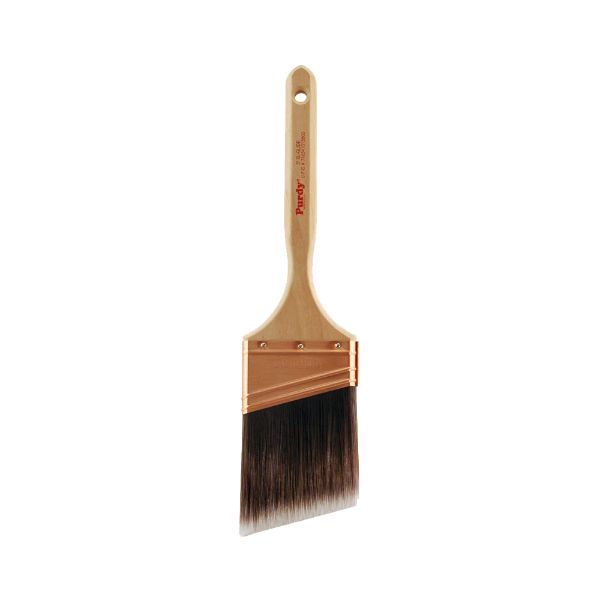
The angled Purdy XL in the Dale style is my second favorite for painting interiors. It is also one of the best cut in paint brushes. Using this brush to paint baseboards, door frames, window sashes, door panels, and cabinets is fantastic. The bristles stay soft and keep their shape for a very long time if you thoroughly clean it after every use.
Painting trim is a breeze with the XL’s nice flex and paint release. When applying a premium leveling paint to door frames with a brush, such as Pro Classic or Emerald urethane enamel, the paint spreads out very smoothly with little brush texture. My preferred brush for trim is the XL in the 2-inch or 2-1/2-inch size.
Because it’s too flexible and soft to cut a straight line on drywall and will take too long, the XL Dale isn’t the best option for cutting-in walls. The best choice for that is the ClearCut.
Cutting a straight line is, ultimately, a skill that can only be developed through experience and repetition. While using a professional paintbrush is essential, the cut lines will still appear wavery without skill and a steady hand. These brushes, however, are fantastic choices for producing professional results with your painting project.
See more about
Сutting Brush Buying Guide
Brush Size
One of the important factors to take into account when choosing the right tool for your needs is the brush’s size. For the majority of projects, a cutting brush should be between 2 and 2.5 inches in length. Likewise, if you’re planning to finish a small task that calls for thin lines, you should be aware of smaller 1- to 1.5-inch brushes. For cutting brushes, three inches is the largest size. For painting larger projects and drawing thick lines, it works best.
Brush Style And Shape
For your convenience, choose a paintbrush for the corners that is different in style and shape. For instance, painting a straight line against the edges is simple with a brush with an angled bristle. Smaller painting projects call for a thin, angled sash. Another choice with a slanted tip for better control while painting is an angled foam brush. Although it is not the most practical option, a round-ended roller can be used in situations where a regular roller cannot reach the edges.
Bristles Material
Without a doubt, edging brushes need to have premium bristles. The type of paint you intend to use will influence the material you choose. In order to apply oil-based paints, you must use a brush with natural bristles. Focus on a brush with synthetic bristles if you primarily use latex paints. Because they maintain their original shape after repeated use, these bristles are ideal. All types of paints can be applied with a foam brush because it quickly and effectively absorbs pain.
Suggested reading: One of the best ways to quickly improve the appearance and ambiance of a space where you probably spend a lot of time is by updating your kitchen cabinets. So, how much does it cost to paint kitchen cabinets?

Some Useful Tips For Cutting In Paint
If you stick to these easy suggestions, cutting will be more enjoyable and effective. Purchase a paint pail first, then fill it with paint for a more practical application. You won’t overdip your brush or use up too much paint while working if you do it this way.
Don’t forget to wiggle the brush a little when painting in confined spaces to ensure that you don’t miss any areas. It is advised to use a headlamp for better work precision because the lines will be more accurate if you can clearly see the contours.
Try to wipe off any paint that may have gotten on your doors, walls, or floor before it starts to dry. Additionally, avoid attempting to immediately cut in all the corners and edges. Instead, focus on one wall at a time, painting and wiping mistakes as you go, then moving on to the next. Last but not least, tidy up the brushes after finishing the job so you can reuse them.
If you’re considering doing it yourself,-painting part of your home, you want to make sure that you get it right the first time. There is very little margin for error when it comes to your time and money. Even though painting your cabinets seems simple enough, you might find yourself second-guessing your decision. What is the best paint brush for cabinets?
FAQs
What Does Cutting Mean In Painting?
Painting around edges, ceilings, corners, trim, cabinetry, and anything else where a roller might get paint where you don’t want it is known as cutting in.
By slowly painting at an angle against the straight surface, cutting in is accomplished. In order to prevent the roller from striking the adjacent surface, you return and paint to a distance of about 3 Prime.
Using a cup makes cutting in simpler. I love the Handy Cup because it’s easy to carry up and down a ladder. A handle is also included.
Is Cutting In Following When Painting Better?
I prefer to complete the harder tasks first in this order. Since it takes longer to cut in, the paint is usually dry when I’m done, allowing me to start rolling paint right away.
Rolling before the paint has dried will leave strange marks and may even remove the paint from its vicinity.
Do Walls Or Trim Need To Be Painted First?
I like to paint the trim before painting the walls. My trim paint can be applied a bit messier on the edges and then “fixed” when I cover it with paint while painting the walls.
I also think that cutting into walls is simpler than trimming.
However, there are times when you paint your walls believing your trim is fine only to find out that it now looks worn out. This occurred to me over the weekend.
You can paint slowly without using tape if you prefer, but be ready to touch up your work.
Are You Going To Need An Angled Brush To Cut In?
You don’t require an angled brush for cutting in, though. All you need is a standard paintbrush. For general cutting in, a regular brush will do, but angled brushes are helpful if you’re trying to get into confined spaces.
How Can I Ensure That My Wall And Ceiling Are Perfectly Aligned?
The most straightforward method is to use a level to create a perfect line between your wall and ceiling. Just lean the level up against the wall to make sure it is completely flat before drawing your line with pencil or tape. When painting or hanging wallpaper, just adhere to your drawn line.
Can I Cut In One Day And Paint The Next?
The day following the cutting in of a room’s edges is acceptable for painting. Painting should be done in two coats in a single day, though. All you have to do is wait until the first coat is completely dry before applying the second coat.
What Is The Simplest Way To Cut In When Painting?
Using a paintbrush to cut in while painting is the simplest method. To do this:
- Put some paint on the brush, then tap it against the can’s edge.
- To draw a crisp line, lean the brush against the wall and move it lightly back and forth.
- To draw a smooth line, let up on the pressure on the brush and pull it away from the wall.
Final Words
It is much simpler to cut straight lines along trim edges and ceiling corners when you use a good paintbrush. Dollar store brushes are inexpensive and won’t produce as neat of lines as more expensive brushes. A good angled paintbrush for cutting-in is essential if you paint every day (like I do).
Since I’ve used Purdy products on my painting projects for many years, I’ve always had a soft spot for the company. Even though they aren’t the best brushes on the market, if you treat them well, they will last you through several coats of paint. Unfortunately, there aren’t many stores that carry Corona brushes, despite the fact that they’re excellent.
I find that the brush that holds the most paint, keeps its shape even after extensive use, releases paint nicely, and doesn’t break is the best brush for cutting in. Additionally, I prefer a brush with firm bristles as opposed to soft, flimsy ones.
I appreciate you reading, a lot.
Read about: Can You Paint Concrete?

